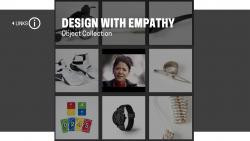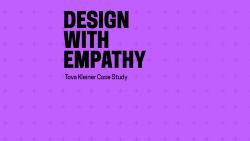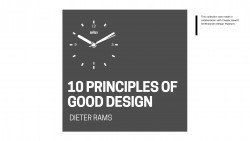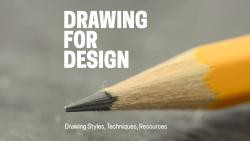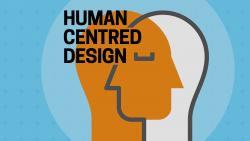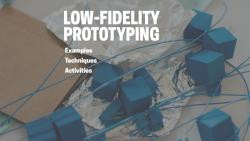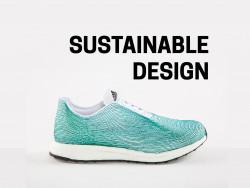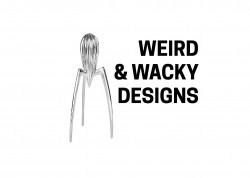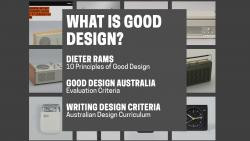Jasmine Kassulke
Design and Technology teacher
Education Queensland
Elementary (9 to 12 years old), Middle School (13 to 15 years old), High School (16 to 18 years old)
Teacher/Educator, Researcher, Museum Staff
Arts, Other
2019 Queensland Cooper Hewitt Fellow.
High School Design Teacher.
Griffith University Design Graduate.
All Design, All the time.
Jasmine Kassulke's collections
DESIGN: Reflection Title Cards
<p>Use these title cards when creating learning lab collections to help categorise parts of your collection. These will assist with understanding the context for the content being displayed and prompt the direction of learning. </p>
 Jasmine Kassulke
Jasmine Kassulke
13
Design with Empathy: Michael Graves Case Study
<p>This collection is designed to explore the essential question: <strong>How do designers understand and experience the needs and wants of stakeholders?</strong> </p>
<p>It looks into the design with empathy approach used by Michael Graves to design and test the Prime TC wheelchair for use in a hospital environment. </p>
<p>Objectives:</p>
<ul><li>Examine methods for developing empathy for your stakeholders </li><li>Gain familiarity with the design process </li><li>Understand what the steps of the design process might look like in application </li></ul><p>Unpacking Questions: </p>
<p style="margin-left:0px;"></p>
<ul><li>What kind of things did the designers research?</li><li>What methods did they use to research and document primary data? </li><li>Who worked with the designers on this project? What value did this add to the project perspective?</li><li>Which stakeholders did the design specifically accommodate? </li><li>How were stakeholder needs prioritised?</li><li>What were the main issues the designer was trying to combat? </li><li>List the steps of the design process evident in the case study.</li></ul><p><br /></p>
<p></p>
 Jasmine Kassulke
Jasmine Kassulke
22
Design with Empathy (Objects)
<p>This collection includes objects that reflect a design with empathy approach. Explore the objects further on the URLs under the info link.<br /></p>
 Jasmine Kassulke
Jasmine Kassulke
28
Human-Centred Design
<p>This learning lab collection is for students and teachers to access tools and resources specific to Human Centred Design. </p>
<p>In this learning lab, students learn about and experience designing in the context of human-centred design (HCD). Fundamental to HCD is the principle that a designer considers human needs and wants as a higher priority than other influences throughout the design process. The success of a design depends on effectively considering the attitudes, expectations, motivations and experiences of humans. Designers use observations, interviews and experiences to acquire data about people and seek to avoid making assumptions about their needs and wants.</p>
<p>
Students will use designing with empathy as an approach to define problems by understanding and experiencing the needs and wants of stakeholders. Students interact with stakeholders throughout the process. Ideas and design concepts are evaluated throughout the process using feedback from stakeholders to determine suitability.</p>
 Jasmine Kassulke
Jasmine Kassulke
29
Inspiring Design Styles
<p>Designs are a reflection of their time and place. This collection showcases pivotal art and design styles from across history. It highlights the temporal nature of design and the way it influences and is influenced by society, culture, politics and science. <strong><br><br>Things to explore:</strong></p>
<ul><li>How do these historical design styles apply the elements and principles of design? </li><li>What key events have influenced the creation of this design style?</li><li>Who are the influential designers who used this style?</li><li>How does the design style influence current designers?</li></ul>
<p> </p>
 Jasmine Kassulke
Jasmine Kassulke
69
Low-Fidelity Prototyping: Products
<p>A prototype is an experimental model of an idea. It is a way to give our ideas a presence that we can put in front of someone else to see if our idea has value. It is important to match the fidelity of the prototype to the stage of the design process. At the beginning we want to use low-fidelity prototypes. Low-Fidelity prototyping refers to rapid prototyping from cheap, readily available materials. At this stage we are testing broad concepts such as materials, forms, usability. </p>
<p>This learning lab collection documents low-fidelity prototyping techniques, activities and student work for use by teachers and students. At the end of this learning lab collection you will find examples of prototyping directly from the design industry as well as video tutorials. </p>
<p>After you explore this learning lab collection you will be ready to embark on your own prototyping adventures. </p>
<p><br></p>
<p><br></p>
 Jasmine Kassulke
Jasmine Kassulke
35
Visual Communication
<p>To become effective visual communicators, emerging artists and designers must first learn how to understand and apply the visual elements of art and design. This learning lab collection explores the elements and principles of visual communication for beginning artists and designers. </p>
<p> Learning Goals:</p>
<ul><li>Learn and practice the Elements of design </li><li>Understand and apply the Principles of design </li><li>Explore historic design styles to identify and describe prominent elements and principles </li></ul>
<p></p>
 Jasmine Kassulke
Jasmine Kassulke
25
Weird and Wacky Designed Things
<p>This collection is full of weird and wacky designed objects. They are designed to to accompany the object of the day discussions in a classroom context. </p>
<p>Have students discuss:</p>
<p>• Describe the object?<br>• What is it?<br>• Why was it made?<br>• Who would use this?<br>• When was it made?<br>• Is it valuable?<br>• Is this design?</p>
<p>At any time students can re-visit objects and stories. </p>
 Jasmine Kassulke
Jasmine Kassulke
30
What is Good Design?
<p>In the Queensland Senior Design Curriculum students must describe design criteria based on the requirements of stakeholders and the principles of good design. To understand what makes design good, students must analyse how designers understand good design. They do this by exploring the ‘Ten principles of good design’ by Dieter Rams (Vitsoe 2017) and the evaluation criteria used by Good Design Australia. This learning lab collection has resources for both. The principles of good design listed in the Australia Curriculum are derived from these two resources. </p>
<p>Learning Goals:</p>
<ul><li>Explore the principles of good design developed by Dieter Rams</li><li>Identify the impact of Dieter Rams on past present and future designs</li><li>Analyse Dieter Rams objects to identify how the principles of good design are applied</li><li>Understand how the principles of good design can be used to develop design criteria essential for measuring the success of design ideas</li></ul><p></p>
 Jasmine Kassulke
Jasmine Kassulke
30



